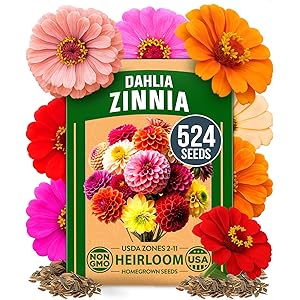As a passionate gardener and lover of the natural world, I’ve spent countless hours observing the fascinating behavior of the Brown Garden Snail (Cornu aspersum). These little creatures are more than just garden pests; they are remarkable animals with unique lifespans and needs. In this article, I’ll share my insights and experiences on extending their lifespan, coupled with valuable tips and researched strategies to help you care for these gentle mollusks.
Understanding the Lifespan of Brown Garden Snails
To effectively extend the lifespan of Brown Garden Snails, it’s essential to understand their natural life cycle. Typically, these snails can live anywhere from 2 to 5 years in the wild, but under optimal conditions, they may live up to 10 years or more in captivity.
Factors Influencing Lifespan
- Environmental Conditions: Temperature, humidity, and food availability significantly impact their lifespan.
- Predation: In the wild, they face threats from various predators, including birds, frogs, and insects.
- Health: Like all living creatures, the overall health of a snail plays a critical role in its longevity.
- Breeding: Reproductive stress can affect their lifespan; hence, managing breeding in captivity is crucial.
Creating the Perfect Habitat
One of the most effective ways to extend the lifespan of Brown Garden Snails is by creating a suitable habitat. Here are some tips I’ve learned over the years:
1. Temperature Regulation
Brown Garden Snails thrive in temperatures between 60°F and 80°F (15°C to 27°C). Extreme temperatures can be detrimental to their health.
- Utilize heat mats or lamps to maintain warmth during colder months.
- Provide shaded areas to protect them from overheating in summer.
2. Humidity Control
Snails require a humid environment to prevent dehydration.
- Maintain humidity levels between 70% and 90% using a hygrometer.
- Regularly mist the enclosure with water, ensuring that it doesn’t become too soggy.
3. Proper Substrate
The substrate in their habitat is crucial for their health.
- Use a mix of organic soil, coconut coir, and leaf litter to mimic their natural environment.
- Keep the substrate moist but not waterlogged to promote healthy burrowing and feeding.
Nutritional Needs: Feeding for Longevity
A well-balanced diet is vital for the health and longevity of Brown Garden Snails. Here’s what I’ve discovered about their dietary needs:
1. Leafy Greens
Fresh vegetables are fundamental to their diet. They particularly enjoy:
- Kale
- Spinach
- Romaine lettuce
- Squash
2. Calcium Sources
Calcium is essential for shell development and overall health.
- Provide cuttlebone or crushed eggshells regularly.
- Offer calcium-rich vegetables like broccoli and bok choy.
3. Avoiding Toxic Foods
Some foods can be harmful to snails. It’s crucial to avoid:
- Citrus fruits like oranges and lemons
- Onions and garlic
- Processed foods
Health Monitoring and Care
Regular health monitoring can significantly affect the lifespan of your Brown Garden Snails. Here are my best practices:
1. Regular Check-ups
Observe your snails for any signs of illness such as:
- Shell deformities
- Unusual lethargy
- Change in eating habits
2. Clean Environment
Keeping their habitat clean is essential to prevent disease:
- Remove uneaten food and waste daily.
- Perform a complete substrate change every few months.
3. Stress Management
Minimize stressors in their environment:
- Avoid sudden temperature changes.
- Limit handling as much as possible.
Breeding and Lifespan Considerations
Interestingly, Brown Garden Snails are hermaphrodites, meaning they possess both male and female reproductive organs. Here’s what I’ve learned about their breeding habits and its impact on lifespan:
1. Breeding Conditions
To encourage breeding while ensuring the health of your snails:
- Provide ample space and food to reduce competition.
- Monitor humidity levels closely as they require moist environments for egg-laying.
2. Managing Offspring
While breeding can be rewarding, it can also lead to overcrowding and stress:
- Consider separating mature snails to prevent overpopulation.
- Provide a separate breeding tank if necessary.
Personal Experiences: Insights from My Journey
Throughout my journey with Brown Garden Snails, I’ve encountered numerous challenges and successes. Here are some personal anecdotes that highlight the importance of care and attention:
1. The Case of the Stressed Snail
Once, I noticed one of my snails becoming lethargic and not eating. After investigating, I discovered that the humidity levels had dropped drastically due to a malfunctioning humidifier. Once I corrected the environment, the snail perked up and resumed its normal activity. This experience reinforced the importance of regular habitat checks.
2. Successful Breeding
After creating the ideal breeding conditions, I was thrilled to witness the birth of multiple baby snails! It was a rewarding experience, but I quickly learned that managing their growth was crucial. I separated them into different containers to prevent competition for food and space, leading to healthier snails overall.
Conclusion: The Key to a Long and Healthy Life
In summary, extending the lifespan of Brown Garden Snails requires a combination of proper habitat management, nutrition, health monitoring, and stress reduction. Here are the key takeaways:
- Create a balanced and humidity-controlled environment.
- Provide a diverse and nutritious diet.
- Monitor their health regularly and maintain cleanliness.
- Manage breeding to prevent overcrowding and competition.
By applying these strategies, I have been able to enjoy the company of my Brown Garden Snails for many years, and I encourage you to embark on this rewarding journey as well. Remember, every effort you invest in their care will pay off in their longevity and overall well-being.
FAQ
How long do Brown Garden Snails live?
Typically, they can live between 2 to 5 years in the wild, but with proper care, they can live up to 10 years in captivity.
What is the best diet for Brown Garden Snails?
A diet rich in leafy greens, calcium sources, and avoiding toxic foods is ideal for their health.
How can I tell if my snail is sick?
Watch for signs such as lethargy, shell deformities, and changes in eating habits.
If you found this article helpful, consider signing up for our newsletter for more tips and experiences on caring for Brown Garden Snails and other gardening insights. Please share this article with friends and on social media to help others discover the joys of snails!
HOME GROWN Zinnia Dahlia Seeds Pack for 2026 Non GMO 524 Flower Seeds | Vibrant Zinnia Elegans for Pollinator Gardens, Borders & Containers | Easy-to-Grow Outdoor Blooms
$5.79 (as of 08/12/2025 04:03 GMT -03:00 - More infoProduct prices and availability are accurate as of the date/time indicated and are subject to change. Any price and availability information displayed on [relevant Amazon Site(s), as applicable] at the time of purchase will apply to the purchase of this product.)
Sign up for our newsletter and stay up to date with exclusive news
that can transform your routine!




